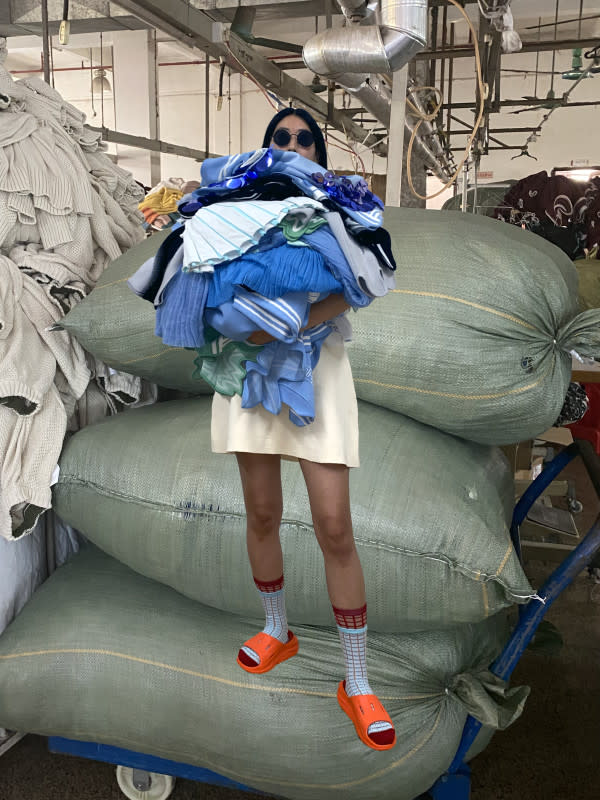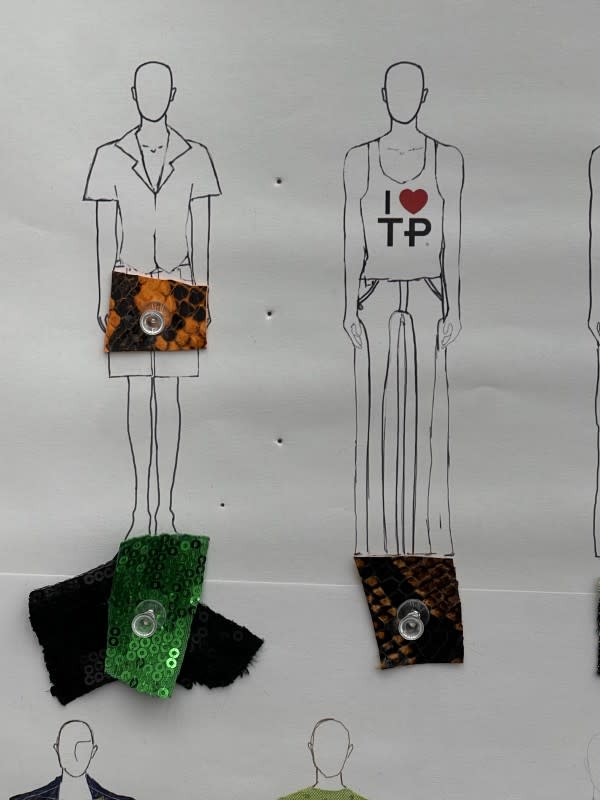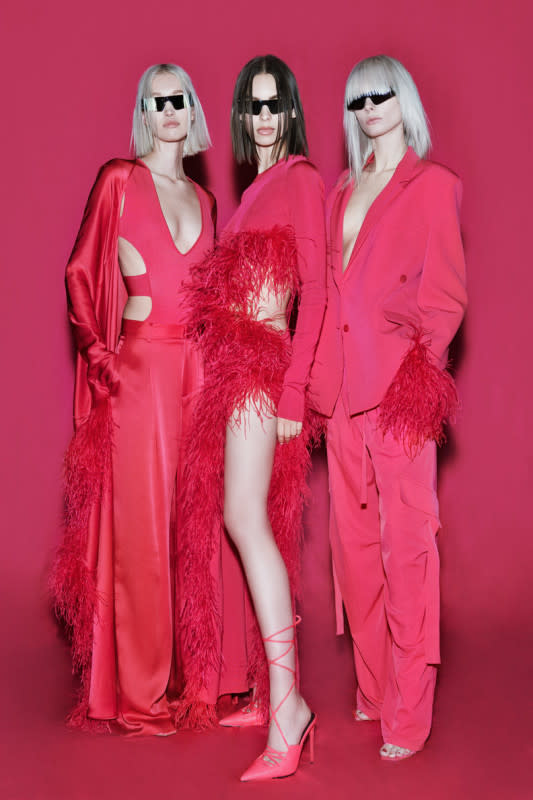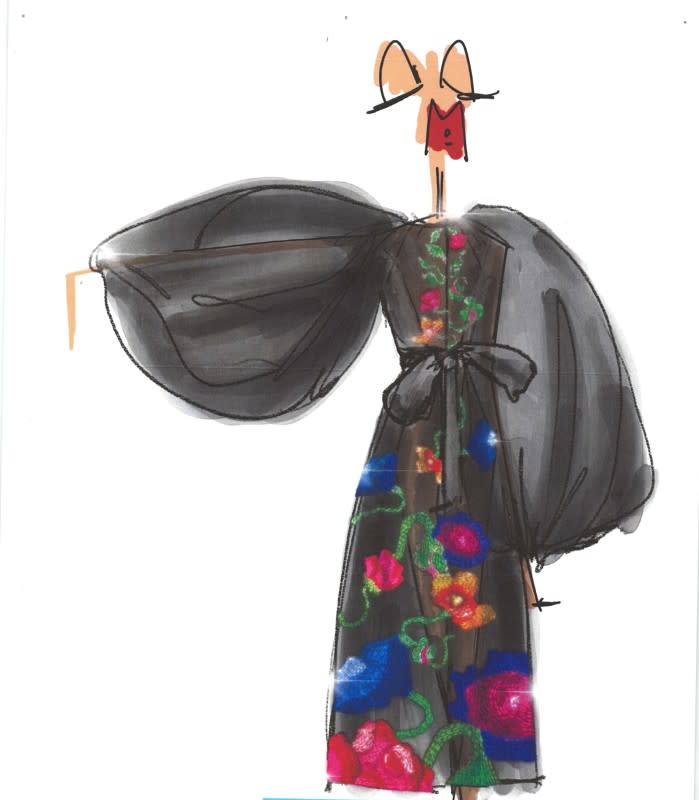The Biggest Challenges Facing Designers in 2023 — and How They Navigate Them
From the costs of making clothing (and the minimums you need to meet) to the less-fun, less-sexy decisions that are fundamental to running a business, designers share the biggest concerns weighing on them today, and how they navigate the challenges that come with having a fashion brand in 2023.
"I'll probably give you the answer that every small business owner will give you, which is: Money is always the top concern."—Bach Mai
"Cash flow, money, financing, capital resources — all of those sorts of things that you need from a financial standpoint to keep you moving from Point A to Point B. We originally were direct-to-consumer; now, we're producing for wholesale. Managing the direct-to-consumer [business] and the wholesale accounts, then also having to produce a collection to show at New York Fashion Week, requires a lot of resources. We're always doing one of three things: We're creating, we're in production, we're in shipping mode. All of that requires resources."—Rebecca Henry, co-founder, House of Aama
"People are like, 'You guys got this, right? You can foot this bill or finance this purchase order with no deposit.' There's this assumption that cash flow is no object. We've been really, really fortunate. We have a lot of really amazing partners who understand that cash flow is everything. Some of our wholesale partners are incredibly sensitive to and aware of the overall cash flow of a small business in New York, where the rent is too damn high — and I mean that spiritually, metaphorically. If you're a luxury brand, sometimes people [think] you must have a lot of money. In fact, the higher-end your product is, the less runway you have as a business."—Lily Miesmer, co-founder, Interior
"We've always developed our own fabrics — that comes with printers, weavers and minimums. From there, you have sampling minimums and production minimums, and if you can't hit them, you pay surcharges, which takes [the price of] and multiplies it. We don't mass produce anything, so we keep in mind how many of anything, from a T-shirt to a gown, is produced, which changes the cut-and-sew minimum. As we've continued to grow and have gotten new opportunities, like moving our production to Italy, we have new sets of minimums. We got into some amazing factories, and got the same sample as a very big Italian house — however, we produce a hundred units of the dress, and they produce 300,000. Who do you think is prioritized?"—Sarah Leff, co-founder and CEO, Jonathan Cohen
"Inflation worries me, on a grand scale. Banks are having trouble, tech companies are going down, big companies are letting people go. A lot of these factors are going to affect the fashion industry and the overall behavior of consumers. People have less and less disposable income to go shopping. What's next? How should we cope with that? We've had a really, really good last two years of growth, but I'm not a hundred percent confident that we’ll be able to maintain our growth rate going forward."—Wei Lin, founder, Ph5

Photo: Courtesy of Ph5
"It's expensive to start a fashion brand. What I suspect happens for a lot of designers is that they start a brand with creative passion, but aren't necessarily fully clued into the fact that it's also going to take a lot of business sense to make their dream come true. It's our responsibility as founders to wear our business hats, so to speak, as much as we wear our creative ones."—Jack Miner, co-founder, Interior
"It's about everything other than design. A lot of people go into it thinking it's about being an artist, and I joke that that's literally the last thing that you get to do."—LM
"You can have a design that's amazing, but at the end of the day, you have to be like: Where's this button coming from? Who's making the fabric? Where's the raw material? There are so many levels that need to be not just explored, but really participated in."—Lindy McDonough, founder, Lindquist
"My biggest concern right now is the longevity of my business. I used to say, as soon as the faucet turns on and the water’s running, it doesn't stop. Obviously, being on the opposite side of 'history' — being a Black gay man having a fashion company — the landscape can be a bit tricky sometimes, in regards to having access to resources and the funds to activate those resources. I can have all these contacts and whatnot, but if I'm sending the email, am I getting a response? Am I getting that support? Those stepping stones should be talked about at the forefront."—Edvin Thompson, founder and designer, Theophilio

Photo: Courtesy of Theophilio
"One thing that was really important to me was making sure we're building a foundation and an infrastructure that not only works, but that can scale. You can have a lot of success and do all these things, but when a big opportunity comes or maybe when the sales come flooding in and you're not ready to take them on, you'll fail to meet them. That infrastructure, that foundation does take money to build and maintain."—BM
"I did a lot of freelance work, especially before I started my business, and I saw a lot of companies trying to get off the ground with a lot of money. It taught me that money doesn't solve all problems. You can blow through capital very quickly if you're not coming from a place of authenticity or if you haven't built the foundation first. One of my biggest concerns right now is actually one of those things where the best problem is the worst problem: We're at an inflection point, looking at what scaling means and trying to bring it back to what the true foundation of Kallmeyer is, which is about not being wasteful, about not biting off more than we can chew, about coming back to who our true customer is and filling her wardrobe rather than trying to become something we're not in a way that forces our customers to have to consume in order to be someone they're not." —Daniella Kallmeyer, founder and designer, Kallmeyer
"I come from a numbers background. I'm quite good at forecasting, but it's impossible for me to forecast a small company like Ph5 because so many things are outside of our control. We're able to stay alive because we're not very greedy — we're not greedy for overnight success, and we're not greedy for fame. We try to win over our customers, one at a time. That's our attitude. It's also probably because I'm an endurance athlete. I really do see this as a long-term game. I don't see it as a sprint to the finish line."—WL
"It's like when you move into a new apartment and you don't have a cabinet full of spices or a fridge full of sauces. You're like, 'I've got to go to Whole Foods and get stuff to cook dinner… Whoa, cooking dinner's actually like a thousand dollars, because I had to buy all these starter core pantry ingredients also.' We thought that, after a few seasons, we'd have a really well-articulated stocked pantry of things to reference and reuse. But you're never getting to the place you'd like to get to where you go to make dinner and you're spending like $10 on meat and calling it a day… Newness is expensive, and this is an industry that demands newness."—LM
"During Covid, we grew, like a lot of other emerging businesses, and the opportunities to expand started to present themselves. We decided to acquire wholesalers around the same time we received the CFDA/Vogue Fashion Fund. It seemed like the perfect opportunity to enter more of the commercial market and also for us to take a look at our business and think about other ways we wanted to generate cash flow. Before that, we were smaller and more boutique, and we didn't really have an idea of how we were going to start making and funding these collections."—Akua Shabaka, co-founder, House of Aama
"The thing I love about the industry is also the thing I hate about it: It moves at such an incredibly fast pace. It's exciting because you have to be very nimble and learn how to pivot quickly or to not get attached to the past. But it also goes at this insane rate that's really difficult to navigate. There's a misconception that because we went off the fashion calendar, we've slowed down. It was to make it more manageable and make it make a little more sense to us. How could we extend the deliveries a bit more?"—Jonathan Cohen, co-founder and designer, Jonathan Cohen
"I design twice a year now. I'm doing six collections a year, so I'll design three and we'll show three to market, so [buyers] are able to see the breadth of the collection and allot their budgets accordingly, because they're all different and have their own set of unique needs. That was risky to do, and was a huge overhaul for timing and getting the whole team on track, but it has paid off significantly. Designing collections together has its challenges, because sometimes it gets confusing, but you're able to space it out more because people need constant newness... We could see internally that we had so many great styles and developed so many samples, but when you're showing so many at one time, half of them are going to get overlooked."—Sally Lapointe, co-founder and designer, Lapointe

Photo: Courtesy of LaPointe
"One of the things that comes up a lot is how the industry pressures designers to show four times a year. It can be debilitating, both from a creative standpoint and a financial standpoint… You finish a collection and you're onto the next, and you haven't even had a chance to test those garments in the market and make sure that they're fitting and that they make sense in your customer's wardrobe. It was really the store that gave us the opportunity to respond to that and decide what that meant for us. For pre-fall, we showed suiting, because two summers ago, that's what all our customers wanted, because they were going to weddings in the summer and they wanted suits. This summer, it was a hundred degrees every day, and the thought of putting on a suit in July sounded horrible. So, what does pre-fall look like for us next season?"—DK
"That first year, we showed four collections, really five. We're not doing that anymore. That pace, on the one hand, allowed us to gain a lot of momentum and visibility with our image-making. But cranking out that much and trying to be inspired wasn't sustainable, especially as we started producing our clothes for retail. I wanted to change that before I just burnt out entirely."—BM
"We have some case studies of what's working, so even if it's something we'd love to move on from, we'll continue it because it's still sellable. We get so caught up in coming up with new concepts every season — even though that's exciting and fresh, it's really important to understand that collections can last a lot longer than what we allow for them to. We were able to enter these [wholesale] spaces with a collection that had existed for two years already, and I was able to see the different ways that you can push pieces and focus on things depending on the season, on when they're going viral or not. I prefer to create a different relationship with our clothing than just pushing our product like that. Some people will ask us, 'Are your collections going to be available after the season's passed?' Those were the most bizarre questions to me, because I'm like, 'If it's available to be made, if we have this stock, why wouldn't it be?'"—AS
"The way that it's done now is so different than 10, 15 years ago... We don't participate in the traditional calendar. We're very careful with how we spend our money — a lot of it goes back to the factory and to our employees, to making sure they have healthcare benefits, to the artistry that goes into making [the product], to investing in equipment that's going to make it a better product in the end and also make it easier for our artists."—LMcD
"It's really hard to survive as a knitwear brand. It's almost mission impossible, to be a knitwear brand and to be around for a while. I like that challenge, and I want to see what I can do."—WL
"During the pandemic, we were on Zoom calls with different designers talking about these things. Gabriela Hearst was very open, and put everyone in contact with the right suppliers for dead stock and all that... Designers are taking more of the initiative to help one another, because it's so hard for everyone. We all are in it together, in that sense. People don't have their cards so close to their heart. Designers aren't waiting for an organization to come up with that because I don't necessarily think it's the industry's responsibility to help. It takes time [to build those contacts]. We didn't have that when we started... If you're at that beginning stage where you're alone and don't have a lot of money, should you be doing a show? Should you be focusing on press? Should you be putting your money towards celebrity? Do you need that fancy studio? Or should you be focusing on the product, building a business and a clientele? You need to survive."—JC

Photo: Courtesy of Jonathan Cohen
"If you're creating saleable products and a compelling brand narrative, there are financial resources that will become available to you in this industry. Wholesale accounts will show up for you and give you deposits. There are invoice factors and purchase order financing institutions that will loan you money if they believe in your business. There are plenty of formulas in place for emerging brands that those institutions feel like have a real shot at creating a scalable business, because it's symbiotic: They want to succeed, and their success is contingent on your success, and vice versa. An institution that has been so instrumental in helping us scale is Hilldun... We could not be doing it without them — anything involving finances, money, credit, loans… You have to be very shrewd and conservative, and you need to know what you're doing before you make certain decisions for yourself and for your business. So long as you're acting in a way that's prudent, those relationships stand to do nothing but help you grow your business."—JM
"I started the company with my best friend, who took on the business side — I was solely creative, she was solely business. It truly does take having a balance of both creative and business savvy… It's not all fun."—SLP
"We had the great fortune of having Neiman Marcus pick up our first collection and be a supporter from the beginning. It has really helped us get to where we are. That kind of support at retail has been incredible and invaluable. They've been great partners. At the same time, you have to keep producing to maintain that relationship. This past season, we did a resort collection, but not for press — it was really sales-focused. We realized that we need to focus on our commercial collection, to allow us more time to develop the creative aspect of what we'd call the 'main' collections." —BM
"When I opened the store just before the pandemic, people would ask, 'How did you make it work? How did you survive?' In a way, having the store was the best-case scenario, because it gave me the opportunity to hyper-localize my business, whereas previously, you were shooting in the dark and hoping for global expansion. When my world got smaller, it got bigger... Everybody in it could then experience this very authentic version of how I like to interact with my customers, breaking down the barriers of this bougie fashion industry and actually getting in the dressing room and dressing people; not relying on young influencers to be the driving force behind what my clothes were inspired by, but regular working women who didn't have an Instagram but had an amazing pitch or were selling their company and had to look impressive in a room filled with suited men. That was so much more exciting for me. And because I was in the trenches, if you will, with those customers every single day, it didn't matter what was happening outside in the industry, because in those four walls of my store, we were the most important people. The business grew in a way where we were like goldfish: We filled our space so quickly."—DK
"For me, it's all about consistency: keeping the amount of hours people are employed consistent throughout the year, having these times that are bigger and times that are smaller, figuring out the flow… We want to make sure everyone is cared for and taken care of. It's a challenge, predicting the market and what's going to happen... We manufacture in-house, so we're able to work not as many months ahead as other brands have to, but I can imagine that's really challenging, to be in the moment but also being six months ahead, trying to plan for that."—LMcD
Read more: How Designers Make It Work in 2023
Want the latest fashion industry news first? Sign up for our daily newsletter.


